Our Sun coloring pages offer a delightful and educational way for children and adults alike to explore the wonders of the sun while engaging in the creative process. Let’s begin on a journey of discovery, diving into the fascinating world of our nearest star. Through coloring, we can not only express our artistic talents but also deepen our understanding of the sun’s importance in our daily lives.
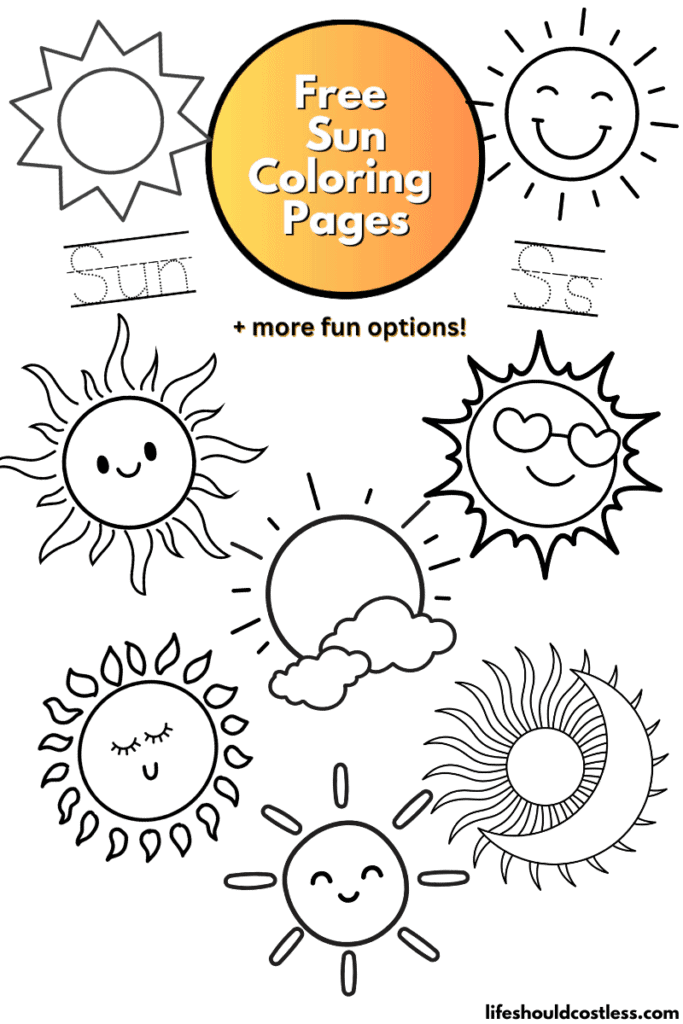
Join us as we delve into the world of sun coloring sheets, where it can easily become an enriching experience for all ages.
Just pick whichever design you like, save the downloadable free PDF template, print it out, & color to your little hearts content.
Or you could even use them as a pattern for embroidery, or inspiration for fine line tattoos.
Sun facts
If you’re new to my coloring pages, you should know that I like to give you the option of learning about the subject so that you can easily turn it into an educational lesson while you are at it…so here we go!
Here are several fun and interesting ,simplified, facts about the sun (my reference source can be found here):
- The sun is a star located at the center of the solar system, and it accounts for more than 99% of the total mass in our solar system.
- It takes approximately 8 minutes and 20 seconds for sunlight to reach Earth, traveling at a speed of about 186,282 miles per second (299,792 kilometers per second).
- The sun is so massive that it could fit about 1.3 million Earths inside it.
- The temperature at the sun’s core reaches a staggering 15 million degrees Celsius (27 million degrees Fahrenheit), creating intense heat and pressure that fuels the sun’s nuclear fusion reactions.
- Sunspots are cooler areas on the sun’s surface that appear as dark spots. They are caused by magnetic activity and can be larger than the Earth.
- The sun has an 11-year activity cycle known as the solar cycle, during which it experiences periods of high and low solar activity, resulting in changes in sunspots, solar flares, and solar winds.
- Solar flares are powerful bursts of radiation that occur on the sun’s surface and release tremendous amounts of energy into space. They can disrupt communication systems and cause auroras on Earth.
- The sun’s outer atmosphere, known as the corona, is much hotter than its surface, reaching temperatures of millions of degrees Celsius.
- The sun generates a constant stream of charged particles called the solar wind, which interacts with Earth’s magnetic field and causes phenomena such as the auroras.
- The sun’s energy is essential for life on Earth. It provides heat, light, and energy for photosynthesis, which is the process by which plants convert sunlight into food.
These facts highlight the sun’s fascinating nature and its crucial role in our solar system and daily lives.
If you would like to read more, here are some other reputable resources to learn about the Sun while coloring:
- https://solarsystem.nasa.gov/solar-system/sun/overview/
- https://kids.nationalgeographic.com/space/article/sun
- https://www.pbslearningmedia.org/resource/the-sun-basics/the-sun-basics/
- To see all of my free printables, go here.
- To see an Alphabetized Index of all my coloring pages, go here.
- To see all of my nature and weather coloring pages, go here.
Coloring tips
Here are some tips to enhance your experience with your Sun picture to color:
- Color Gradient: The Sun is often depicted with a gradient of colors, ranging from bright yellow or orange in the center to lighter shades towards the edges. Start by using a vibrant yellow or orange for the center and gradually transition to lighter shades as you move outward.
- Blending Techniques: Experiment with different blending techniques to create a smooth transition of colors. You can use colored pencils, markers, or even watercolor paints to blend the colors together. Layering and gently blending the colors will give your Sun a more realistic and radiant appearance.
- Highlighting: Add a touch of brightness and shine to your Sun by leaving small areas or lines uncolored to represent highlights. This technique creates a sense of dimension and makes your Sun appear more luminous.
- Background Choice: Consider the background when coloring your Sun. A clear blue sky or a celestial backdrop with stars can provide a striking contrast to the vibrant colors of the Sun. You can also experiment with various color combinations to create different moods and atmospheres.
- Texture and Details: Add texture to your Sun by using different stroke techniques or patterns. You can create subtle lines or dots to represent solar flares or Sunspots. These details add depth and visual interest to your artwork.
- Experiment with Mixed Media: Don’t limit yourself to just one coloring tool. Explore the use of different materials like glitter pens, metallic markers, or even collage elements to add a unique touch to your Sun color sheets.
- Personalize and Have Fun: There are no strict rules when it comes to coloring. Feel free to add your own creative touches and interpretations. Whether you want to create a whimsical Sun with a smiling face or a realistic representation, let your imagination guide you and enjoy the process.
Remember, coloring is supposed to be a joyful and relaxing activity, so embrace your own style, experiment with techniques, and let your creativity shine with your Sun pictures to color!
Options For Printing:
Letter S is for Sun writing practice worksheets
*My letter S is for Sun coloring sheet printables are specifically designed to be used in a classroom setting, they are the only printable options on this page that do not need written permission to use in a public setting.
Please send the link to this post along if anyone asks you where you got them. Thank you!

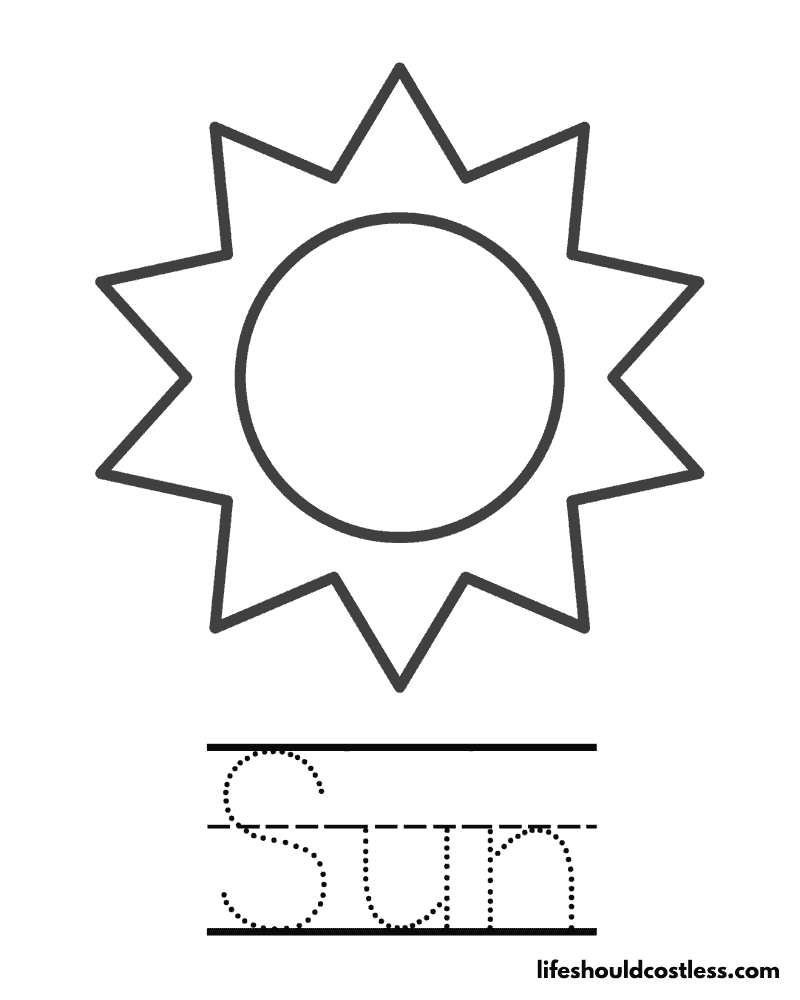
Various sun designs
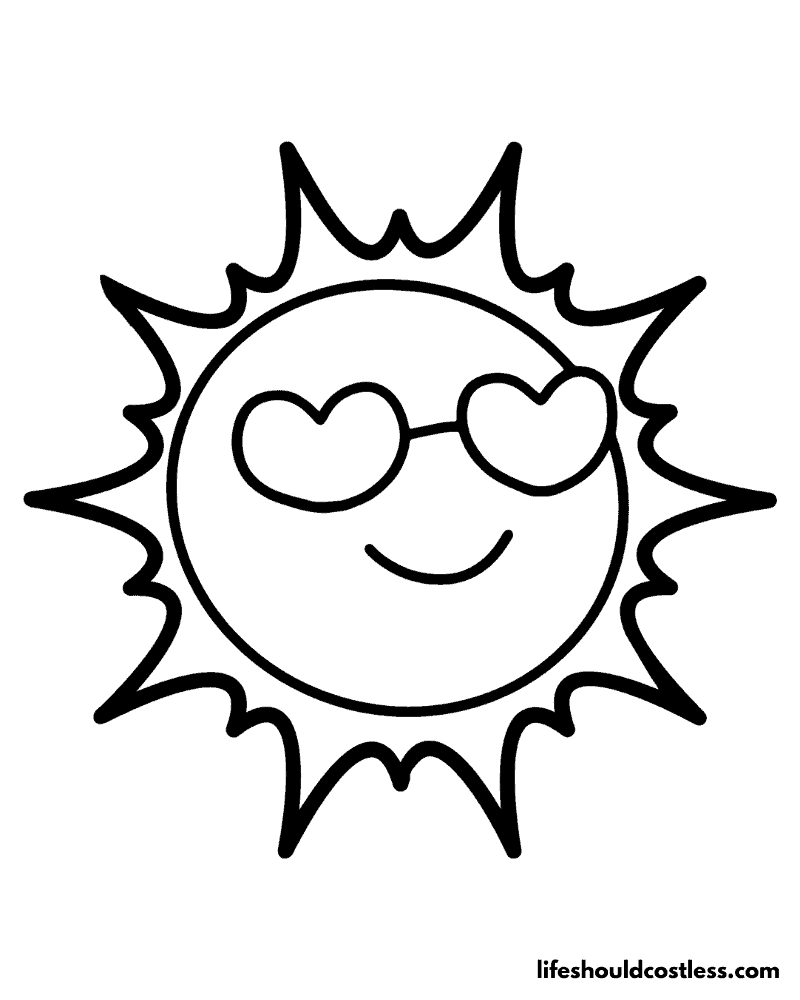
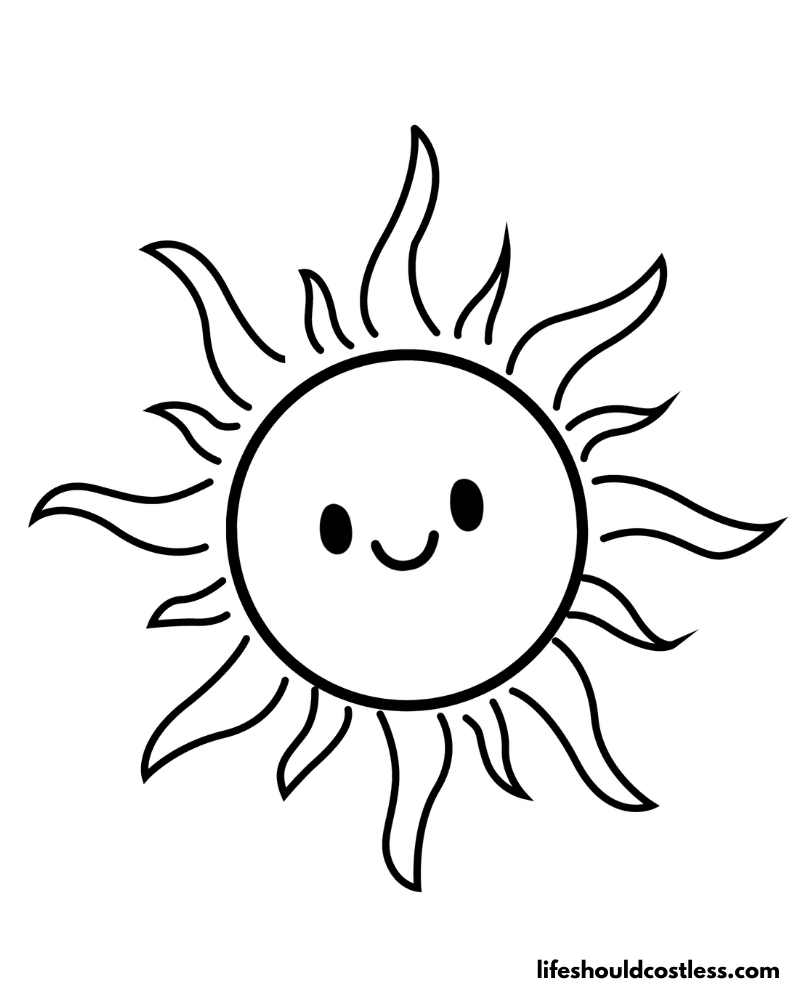

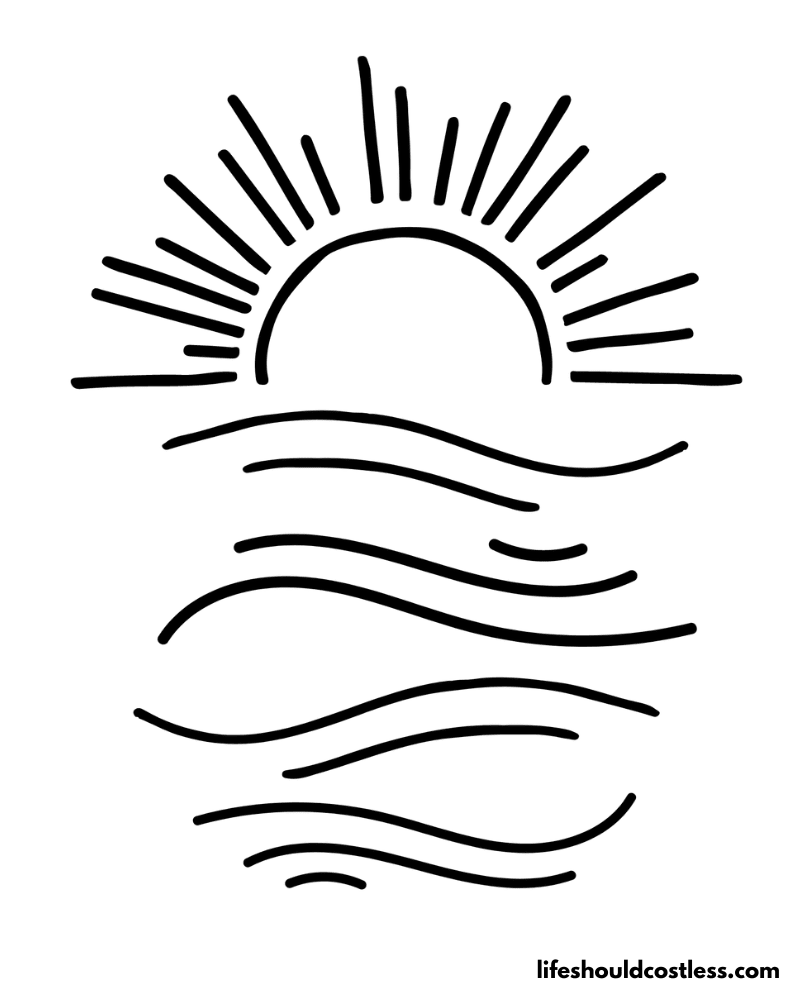
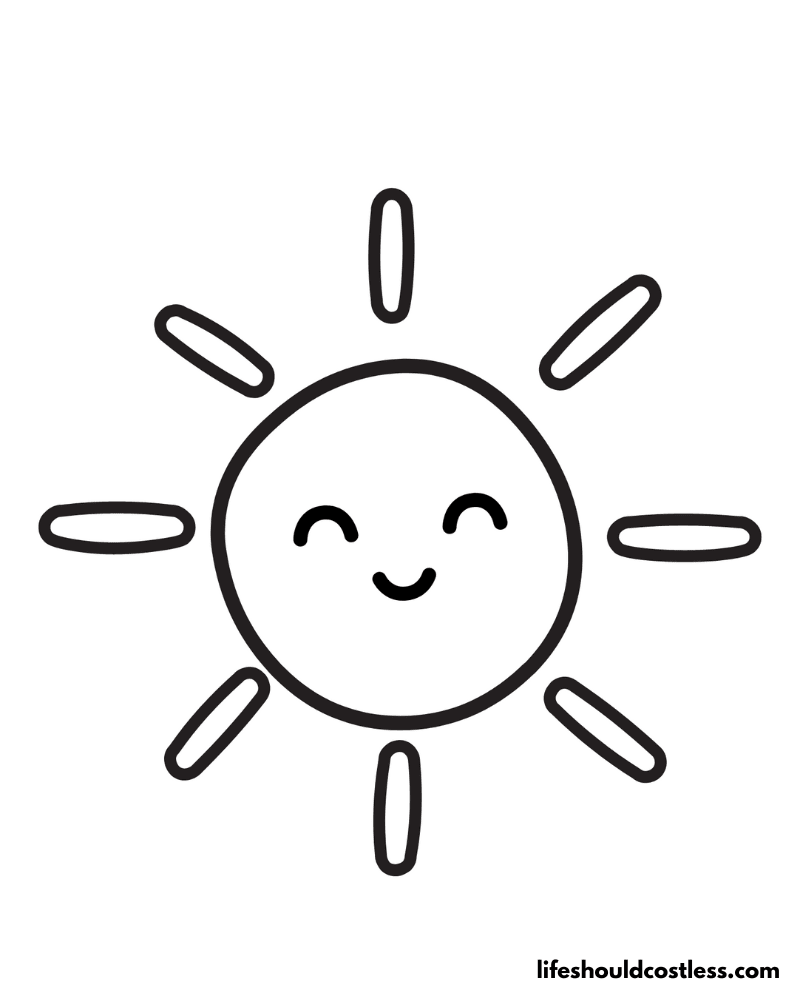
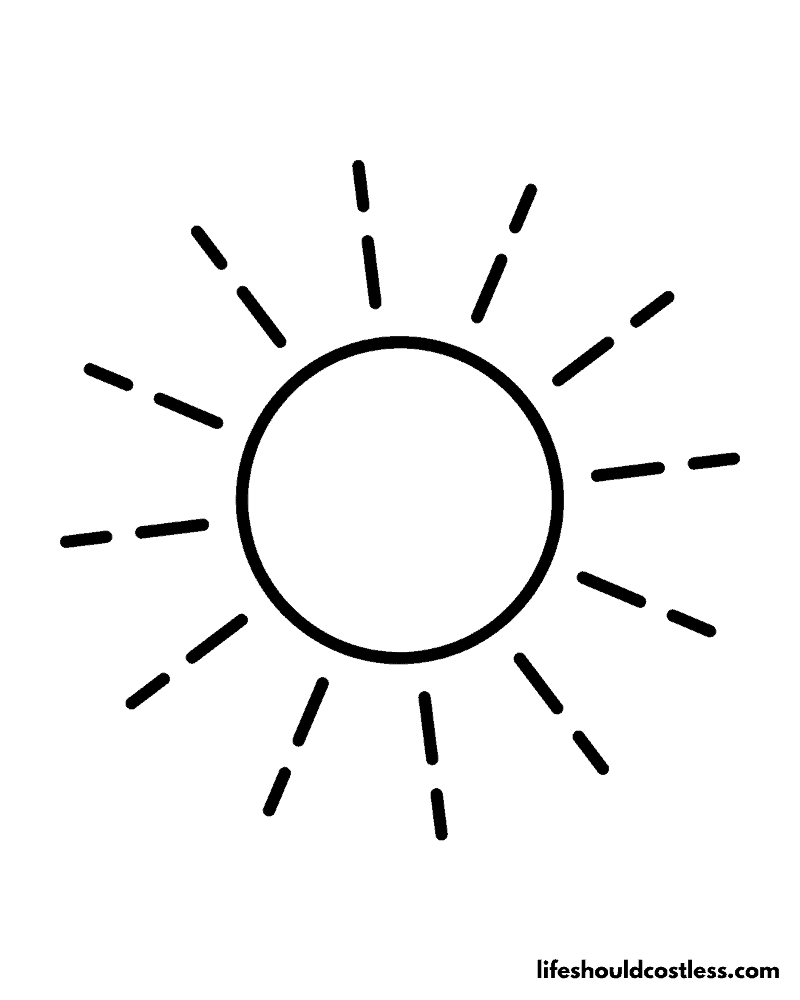
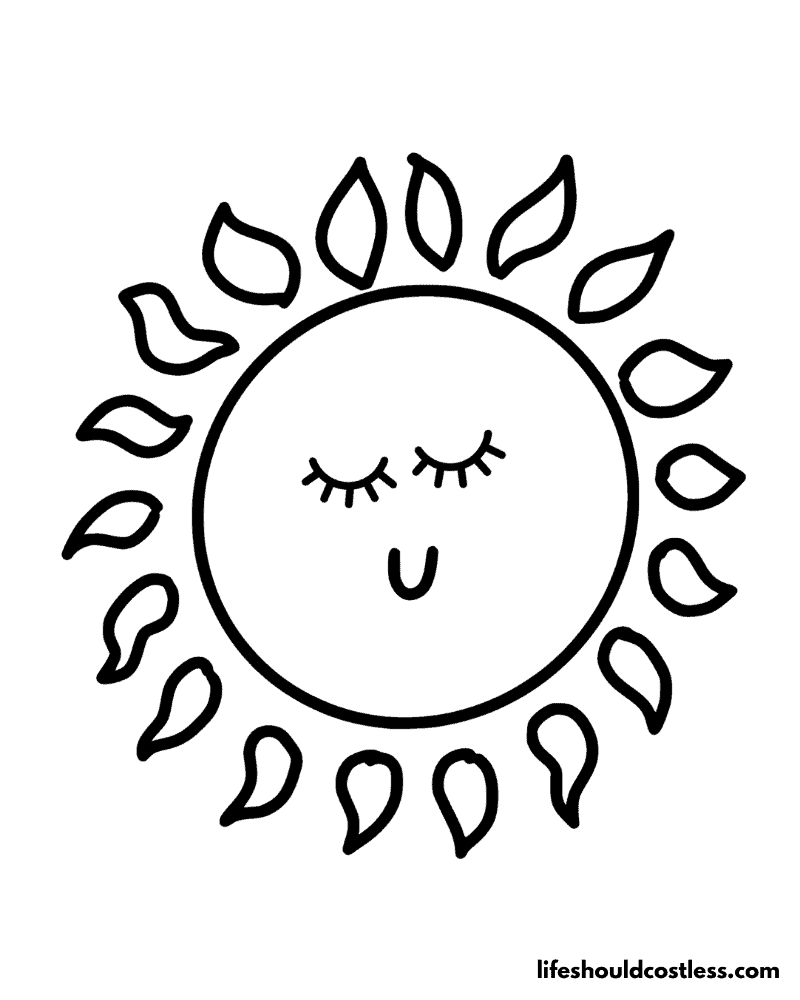
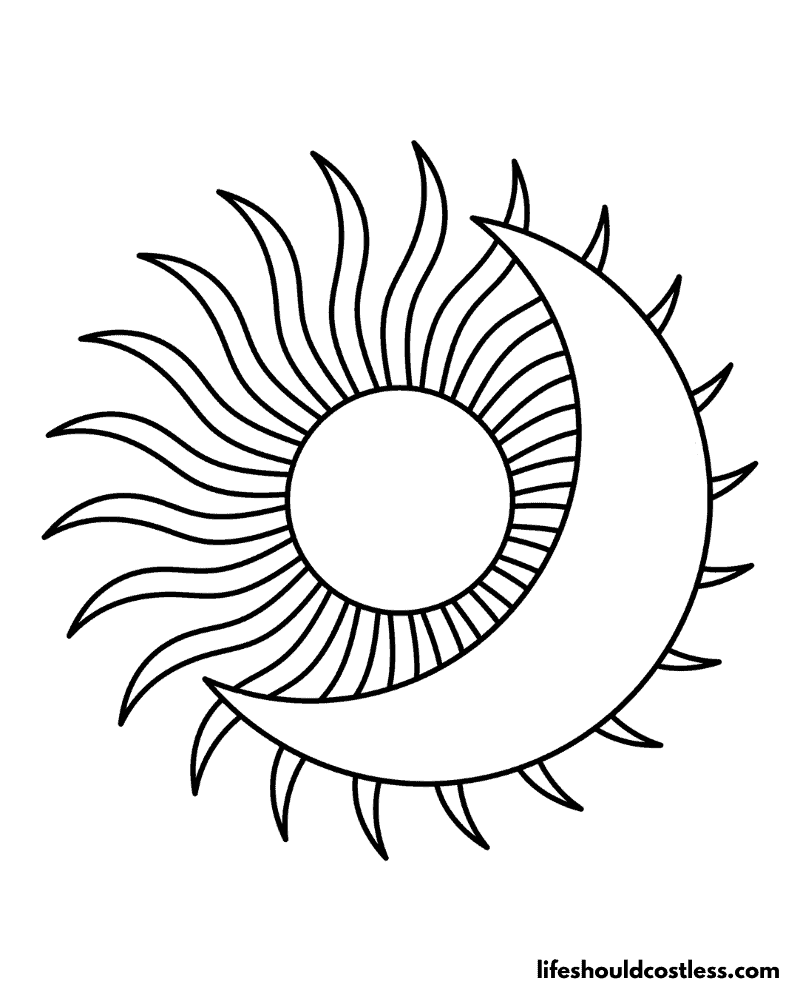

FAQ’s
The actual color of the Sun, when observed from space or outside Earth’s atmosphere, is white.
However, when we view the sun from Earth’s surface, it often appears to be yellow or orange. This change in color perception is primarily due to Earth’s atmosphere. The Earth’s atmosphere scatters shorter-wavelength light (such as blue and violet) more than longer-wavelength light (such as yellow and red).
As a result, when sunlight passes through the Earth’s atmosphere, the shorter-wavelength blue and violet light is scattered away, while the longer-wavelength yellow and red light reach our eyes, giving the sun a yellowish or orangish hue.
It’s important to note that the perceived color of the sun can also vary depending on atmospheric conditions, such as pollution, smoke, or dust in the air, which can further alter its appearance.
According to NASA, the Sun is considered to be a yellow dwarf star. Its surface temperature is approximately 5,500 degrees Celsius (9,932 degrees Fahrenheit), which corresponds to a color temperature of around 5,500 Kelvin.
This color temperature is often described as white, but to human eyes, the Sun typically appears yellow or slightly orange when observed from Earth’s surface due to the atmospheric effects mentioned earlier.
When NASA captures images of the Sun using specialized instruments and filters, they are able to analyze its emission across different wavelengths, providing valuable scientific data for research purposes.
*I will add more Sun colour / color questions and answers as the questions get sent to me.
In conclusion, in the world of artistic expression, sun coloring pages provide a delightful avenue to explore the brilliance and significance of our nearest star, the Sun.
Through the act of coloring, we not only engage our creativity but also deepen our understanding of the Sun’s vital role in our lives and the larger cosmos.
From the vibrant gradients and blending techniques to the playful details and personal touches, with a picture of Sun to color it allows us to bring warmth and radiance to our artwork.
As we embark on this creative journey, we discover that coloring the Sun is not only a pleasurable activity but also an educational one, where we can learn about the Sun’s characteristics, its impact on Earth, and the wonders of our solar system.
So pick up your colored pencils, embrace the joy of coloring, and let the Sun’s brilliance shine through your masterpieces, infusing your world with brightness and inspiration.
Thanks so much for stopping by my blog and supporting my endeavors to make people’s lives a little easier/better/more affordable.
If you liked this post, or found it helpful in any way, please make sure to share it with your family, friends, and co-workers via social media.
Or you could even send them the direct link via email. Whichever way you choose to spread the love, I super appreciate it! ~Sarah
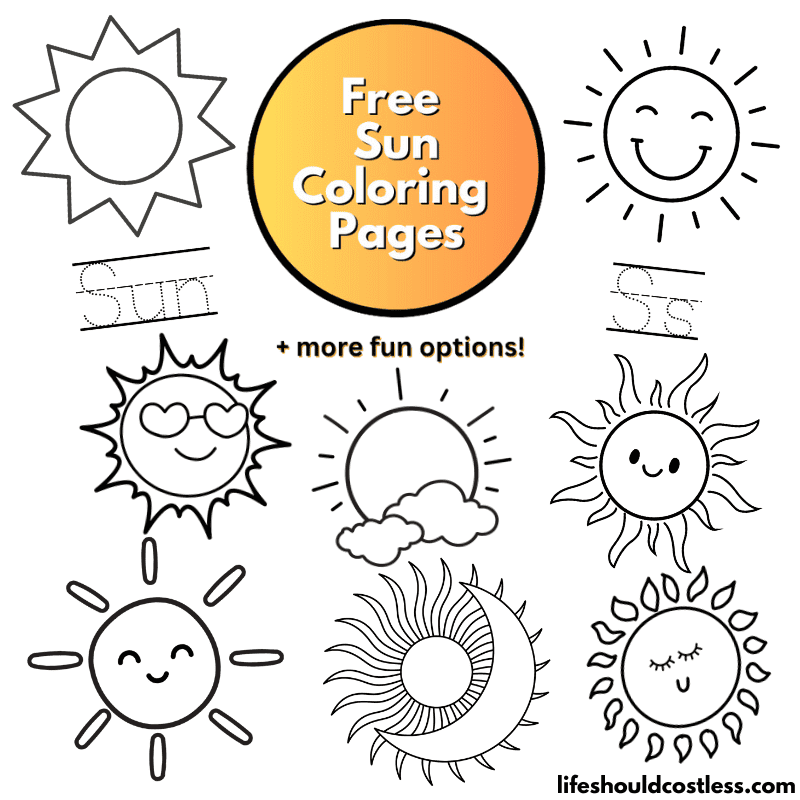
Follow Me
How To Follow & Support This Site
- If you would like to subscribe to my email list, go here.
- Make sure to follow along via social media, by going here.
- If you would like to learn how to really show your support to this site (at no cost to you), go here.
- If you would like to make a direct donation to the site, go here.
Check out my other free printables
- To see all of my free printables, go here.
- To see an Alphabetized Index of all my coloring pages, go here.
- To see all of my nature and weather coloring pages, go here.
Otherwise, here are direct links to several of my other related posts that you’re also going to love:
Nature & Weather
Summer coloring pages
Fall Coloring Pages
Halloween
Thanksgiving
Winter Coloring Pages
Christmas
New Years
St. Patrick’s Day
Valentine’s Day
Spring coloring pages
Easter
Other good resources for a printable Sun
- https://www.edupics.com/coloring-page-sun-i23352.html
- https://www.justcolor.net/kids/thematic-coloring-pages/weather/?image=weather__Coloring-for-kids-weather-22264__2
- http://www.clipartbest.com/clipart-dcr6bLdxi
*This post was originally shared to this blog on 05/31/2023, and has since been updated to improve user experience, add video instruction, as well as to make it as shareable as possible across the social medias.
**Please note that I do try my hardest to provide factual, but easy to understand, information about each topic. If you notice a discrepancy in my coloring pages, facts, or see something that you deem “misinformation/incorrect” please make sure to notify me about it. I would prefer that you send me an email with a link to a more reputable resource on that subject, so that I can correct it as soon as possible. Thanks so much for helping this site become the best that it can be!
***Resources from djinkers were used in the production of this article.
